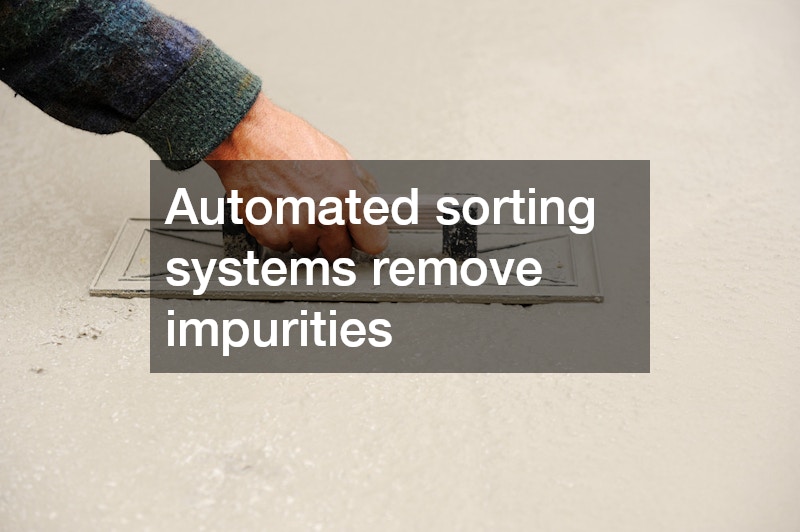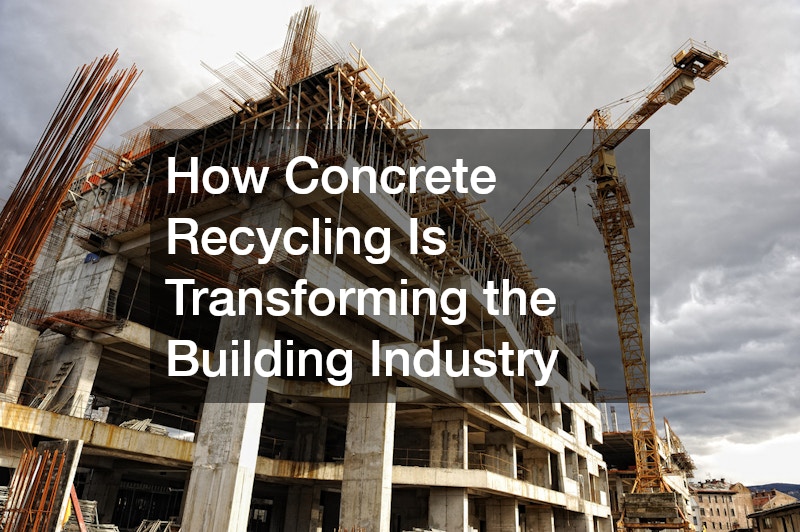
The construction industry has long been associated with significant environmental impact, from resource depletion to massive amounts of waste. As cities grow and infrastructure projects expand, the demand for sustainable building practices becomes more urgent. One solution gaining momentum is concrete recycling, a process that repurposes old concrete from demolished structures into new construction materials. This innovative approach not only reduces waste but also conserves natural resources, lowers costs, and contributes to a more environmentally responsible building industry.
The Basics of Recycling Concrete
The process involves breaking down old concrete structures, removing contaminants such as metals or wood, and crushing the remaining material into aggregates. These aggregates can then be used in new concrete mixes, road base, or other construction applications. The process often begins with demolition, followed by sorting, crushing, and screening. Advances in recycling technology have made it possible to produce high-quality aggregates that meet industry standards, making recycled concrete a viable alternative to traditional virgin materials.
By diverting concrete from landfills, concrete recycling addresses one of the construction industry’s biggest environmental challenges: construction and demolition (C&D) waste. Recycling this material significantly reduces landfill use and minimizes the need for quarrying new stone, which in turn lowers the environmental footprint of construction projects.
Environmental and Economic Benefits
The environmental benefits of recycling concrete are substantial. First, it conserves natural resources such as limestone, gravel, and sand, which are typically used in traditional concrete production. This conservation reduces energy consumption and lowers greenhouse gas emissions associated with material extraction and processing. Second, it helps mitigate landfill overcrowding, decreasing the ecological impact of construction waste disposal.
Economically, concrete recycling offers significant cost savings for builders and contractors. Recycled aggregates are often less expensive than virgin materials, reducing overall project costs. Additionally, recycling can save money on disposal fees, which can be a major expense for large demolition projects. Some governments and municipalities also offer incentives for using recycled materials, providing an additional financial advantage.
Technological Advances Driving Recycling
Technological advancements have played a key role in making the recycling process more efficient and effective. Modern crushing and screening equipment can produce aggregates with precise size and quality specifications. Automated sorting systems remove impurities such as metals, plastics, and wood, ensuring that recycled concrete meets strict building standards.
Innovations in concrete mix design have also expanded the use of recycled aggregates. Engineers can now create high-performance concrete that incorporates recycled materials without compromising strength or durability. This development opens the door for wider adoption of concrete recycling in commercial, residential, and infrastructure projects.
Real-World Applications
The impact of recycled concrete is evident in many real-world construction projects. Recycled concrete aggregates are commonly used in road construction, where they serve as a durable and cost-effective base material. Some builders incorporate recycled concrete into new concrete mixes for sidewalks, parking lots, and building foundations.
Large-scale infrastructure projects have also embraced concrete recycling. For example, highways undergoing renovation often use crushed concrete from old road surfaces in the new pavement. This approach not only reduces waste but also creates a closed-loop system where materials from previous projects are reused in future ones. Such practices are transforming the way construction projects are planned and executed, making sustainability a central consideration.
Challenges and Considerations
Despite its benefits, recycling concrete isn’t free of challenges. The quality of recycled aggregates can vary depending on the source material, and improper handling can lead to contamination or weaker concrete mixes. Contractors must ensure proper sorting and processing to maintain material integrity.
Transportation and logistics also play a role. Moving demolished concrete to recycling facilities can be costly and time-consuming if local infrastructure is lacking. However, many regions are investing in local recycling plants and mobile crushing units to address these challenges, making recycled concrete more accessible and practical.
The Future of Recycled Concrete
As the building industry continues to prioritize sustainability, the role of recycled concrete is expected to grow. Environmental regulations and green building certifications are increasingly encouraging the use of recycled materials. Additionally, ongoing research is exploring ways to enhance the properties of recycled concrete, such as improving its strength, durability, and performance in specialized applications.
By incorporating concrete recycling into standard construction practices, the industry can significantly reduce its environmental impact while promoting innovation and efficiency. The combination of technological advancements, regulatory support, and growing environmental awareness makes recycled concrete a cornerstone of sustainable construction.
Repurposed concrete is transforming the building industry by offering a practical solution to one of its most pressing challenges: waste management. Through innovative processing techniques, recycled concrete provides a cost-effective, environmentally friendly alternative to traditional materials. Its applications in road construction, foundations, and infrastructure projects demonstrate its versatility and potential for widespread adoption.
As the construction sector embraces sustainability, concrete recycling will continue to play a critical role in reducing environmental impact, conserving resources, and fostering a more responsible approach to building. By investing in recycled materials and supporting technological advancements, the industry can create a future where growth and environmental stewardship go hand in hand.




